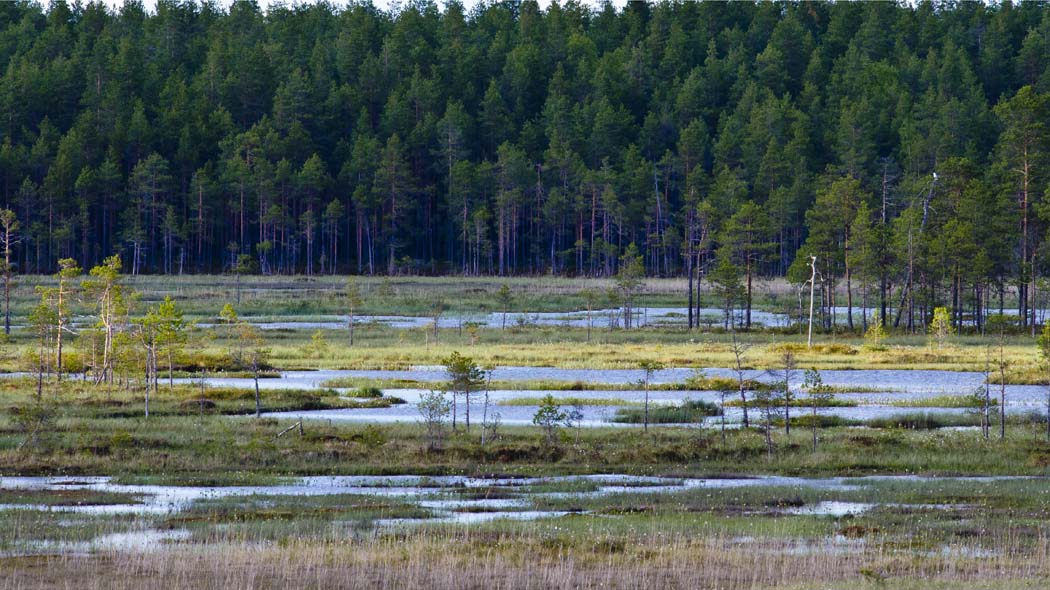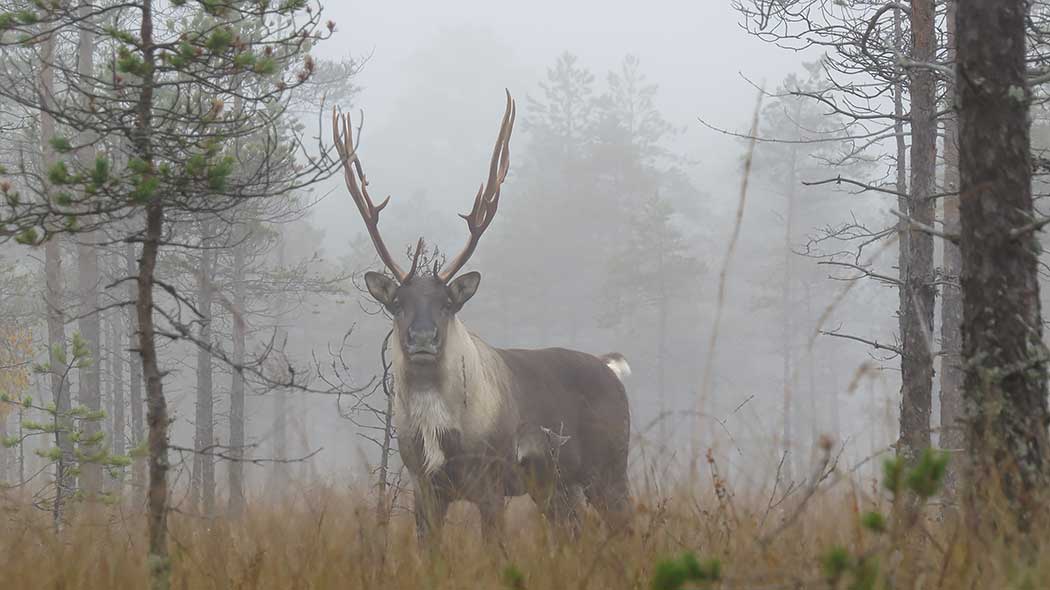Natural Features of Salamajärvi National Park

Spot the park's winged inhabitants
The landscape of Salamajärvi National Park is dominated by mires, because it is located on a watershed, where differences in altitude are small and flow of water is weak. Characteristic to the area are large open fens with only few trees, but also many other types of mires are represented. On the marked trails you can learn about the diverse mire ecosystems.

Heikinjärvenneva is the most important of the mires in the national park. From the observation tower standing on the edge of the mire, you can watch the abundance of wader species in the national park. The most common of them are the Common Greenshank (Tringa nebularia), the Wood Sandpiper (Tringa glareola), the Northern Lapwing (Vanellus vanellus), the Common Snipe (Gallinago gallinago) and the Whimbrel (Numenius phaeopus).
Colonies of black-headed gulls and little gulls provide safe nesting places for the Eurasian Wigeon (Mareca penelope), the Common Teal (Anas crecca) and the Northern Pintail (Anas acuta). Using a telescope, you can also follow the lives of bean geese, common cranes and whooper swans at the mire. If you are lucky, you may also see a golden eagle (Aquila chrysaetos), the most magnificent bird of prey of the wilderness, circling above Heikinjärvenneva.

The ancient forest of Koirajoki
The most impressive forest nature of the national park is the Koirajoki old-growth forest area, which has been protected by Metsähallitus decision since 1912. There is a large number of tall old trees in the Koirajoki pine-dominated old-growth forest. Deciduous trees, sturdy deadwood trees and a wide variety of decaying trunks add to the diversity. Endangered species typical of old-growth forests thrive in the natural forest.

The most abundant of the bird species living in the depth of the forest are chaffinch, willow warbler, the Pied Flycatcher (Ficedula hypoleuca), the Spotted Flycatcher and the Siskin (Spinus spinus). You have good chances of spotting a common redstart (Phoenicurus phoenicurus) in a pine forest where it nests in an old woodpecker’s hole. At the same time, the slender high-pitch singing of the Goldcrest (Regulus regulus) can be heard in a spruce forest. Climbing up a tree trunk, the Treecreeper (Certhia familiaris) is searching for spiders from bark cracks where it also builds its nest. The Brambling (Fringilla montifringilla), which mostly occurs in Northern Finland, is still common in the rugged forests of the Salamajärvi National Park even though climate change is pushing it steadily towards the north.
The Finnish forest reindeer at Salamajärvi
If you are lucky, you may spot the Wild Forest Reindeer (Rangifer tarandus fennicus) on the hiking trails of the national park. The Wild Forest Reindeer disappeared from Finland in the beginning of the 1900s for decades. In 1979, two males and eight females were transferred from Kuhmo, and since then the population of the Wild Forest Reindeer has increased in Suomenselkä area to over 2000 individuals.

In summer, the forest reindeer and their calves graze as small groups at the mires of the park. In autumn, they wander westwards as herds to their winter pastures outside the national park. They return to the park in spring to fawn.
Salamajärvi National Park
- Established 1982
- Area 65 km²

The Emblem of Salamajärvi National Park is Wild Forest Reindeer
Publications of Salamajärvi National Park
Publications of Salamajärvi National Park (julkaisut.metsa.fi)





